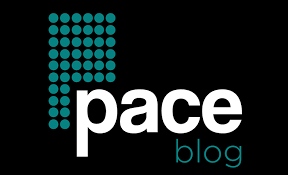The success of businesses depends on proper communication links between their salespeople and market researchers. The departments maintain separate goals from one another together with distinct operational measurements and processes which interfere with their joint work. Through its implementation the Customer Relationship Management (CRM) system works to eliminate communication barriers that create misalignment between both teams. CRM software achieves better business results through its centralized customer database which supports a single platform for tracking interactions allowing marketing and sales to work more effectively together.

Sharing Customer Insights Across Teams
CRM systems enable marketing and sales teams to boost their collaboration because they offer a shared platform for important customer information and data. Marketing teams obtain customer data from their engagement programs and social media platforms and email contacts but sell teams depend mostly on direct client encounters. CRM software provides the teams with one unified database for customer information so they can perform their work with current details. The combined data access between teams minimizes communication errors and avoids mistakes while facilitating a smooth information exchange.
Real-Time Tracking of Customer Interactions
The tracking capabilities of CRM systems enable the sales and marketing departments to enhance their alignment through instant monitoring of customer interactions. Marketing teams can give sales representatives the information needed to adapt their strategies through tools that track customer actions including social media engagement together with website views and email activity. The salesperson gains valuable insights from observing the recent product page interactions of a customer which enables them to discuss a topic directly related to the customer’s interests. Real-time information sharing through this platform results in higher operational efficiency while growing the odds of closing transactions.
Providing Transparency with Performance Metrics
If you’ve ever wondered, What is a CRM, it’s a tool designed to streamline processes, boost collaboration, and create more meaningful customer relationships across departments. The visibility CRM software gives marketers helps them align their targets with sales personnel by showing significant performance indicators. The selling and marketing functions have contrasting metrics which leads to sales conversion rates for sales teams and campaign success and lead acquisition rates for marketing teams. The real-time dashboards in CRM systems let teams monitor their performance activities so they maintain consistent expectations between departments. A transparent view of goals encourages teamwork and produces enhanced results between departments.
Automating Tasks for Greater Efficiency
CRM software builds communication channels through the functionality that lets users automate lead nurturing and follow-up processes. Sales representatives dedicate lengthy periods to follow up leads manually and supervise prospect management activities. CRM software makes time available to sales and marketing teams by taking control of repetitive functions so they can work more effectively on their most important work. The setup of behavioral-triggered marketing emails by teams helps sales experts concentrate their efforts on prospects who show strong conversion potential. The automated process creates better time management while streamlining the movement from marketing activities to sales work.
Improving Lead Segmentation and Targeting
The ability to segment leads through CRM systems enables two teams to improve their communication by delivering targeted messages to specific groups. Leadership markets enable organizational teams to divide their leads through multiple criteria including age groups and personal interests or past interactions. The sales personnel obtain directional lists of leads with maximum conversion potential directly from the segmented lead data. The sales representatives can dedicate their time to qualified prospects because the company’s approach directs their efforts toward worthwhile prospects while permitting the marketing team to develop enhanced practices through sales-generated feedback. Both teams enhance their results when they exchange data on their leads and customer information.
Tracking the Entire Customer Journey
CRM systems enable all departments to monitor customers’ complete interaction experience from beginning to end. The customer interaction tracking develops from the first company contact all the way to post-sale support by providing a complete log of such interactions. Both teams receive comprehensive customer information to properly understand what their needs are and their specific requirements together with their areas of concern. Both departments utilize this journey positioning information to deliver appropriate messages when a customer needs them the most. The use of customer-specific strategies develops stronger bonds with clients resulting in better customer satisfaction levels.

Ensuring Smooth Handoffs Between Teams
CRM systems make transitions more fluid between marketing teams and sales teams specifically during handover periods when a lead moves from marketing to sales personnel. CRM systems ensure continuous information flow in the process of lead transfer from marketing to sales by maintaining full data availability. Sales representatives gain access to complete documentation along with previous communication logs and customer records to initiate conversations with full understanding of client backgrounds instead of requiring self-learning. The transition delivers enhanced customer satisfaction that builds stronger chances for sales success.
Customer Relationship Management systems provide critical functions that enable easy communication flows between marketing and sales professionals. CRM software unites customer information in one place while handling repetitive work so both marketing and sales groups receive instant performance updates which leads to better coordinated approaches. The manuscript becomes better for the customer while enabling successful sales conversions alongside stronger business expansion. Businesses that want to understand CRM can learn that it functions as a workflow management solution that facilitates employee collaboration and develops strong customer connections between different departments.

